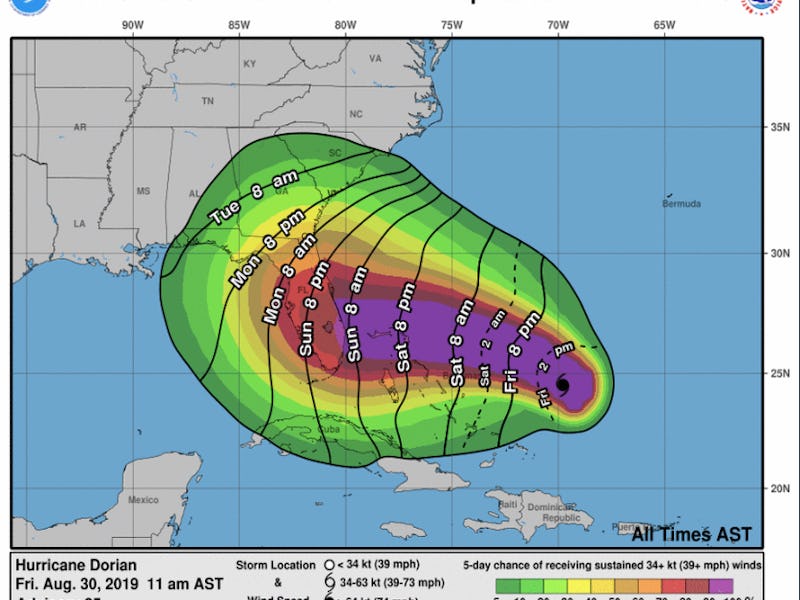Hurricane Dorian This Weekend: Predictions Get More Accurate as It Approaches
But South Carolina isn't off the hook yet.

Hurricane Dorian passed by Puerto Rico, the Virgin Islands, and the Dominican Republic without causing much damage, but Florida, Georgia, and South Carolina aren’t off the hook yet. Since the storm departed the Caribbean islands and headed out into open waters, it has gathered strength. Upgraded to a hurricane right before it hit Puerto Rico, as of Friday morning Dorian was showing sustained wind speeds of 110 miles per hour, which is the upper limit of Category 2 status.
By the time Dorian reaches the southeastern United States, it is predicted to strengthen to a Category 3 or 4 storm.
And while at this point meteorologists are fairly certain that Dorian will hit the US over the weekend, it’s not totally clear which states will bear the worst of it.
In preparation, Florida Governor Ron DeSantis declared a state of emergency on Wednesday, and Georgia Governor Brian Kemp followed suit on Thursday.
South Carolina’s officials aren’t quite as concerned, as they will likely only catch the edge of Dorian, but the National Weather Service has issued a flooding advisory for the coastal regions of North and South Carolina.
“Minor flooding along coastal areas is likely the next couple days during evening high tide. In addition, enhanced rip current risks and rougher surf will likely develop beginning late Saturday, associated with swell from Dorian,” reads the Friday advisory.
Up until this point, Dorian had been moving rather unpredictably.
As Inverse reported on Wednesday, then-Tropical Storm Dorian was predicted to pass between Puerto Rico and the Dominican Republic, but it veered north and avoided Hispaniola — the island that’s home to the Dominican Republic — entirely.
Some of this unpredictably has been due to the geography of the islands in its path, though some has also been due to ocean conditions. Shearing winds and dry air were predicted to weaken the storm, but at the same time, warm seawater was predicted to intensify it, leaving meteorologists little to do but wait and see which forces would win out.
As we can see, the latter turned out to be the case.
Moving into the Labor Day weekend, though, much of this unpredictably is expected to fade away, and all that’s left to see is just where Hurricane Dorian lands on the east coast.